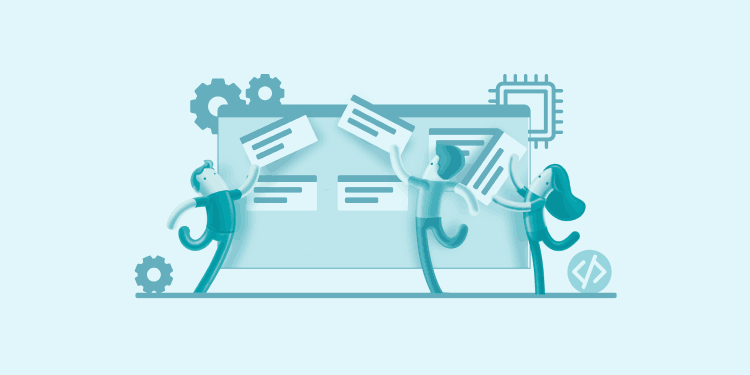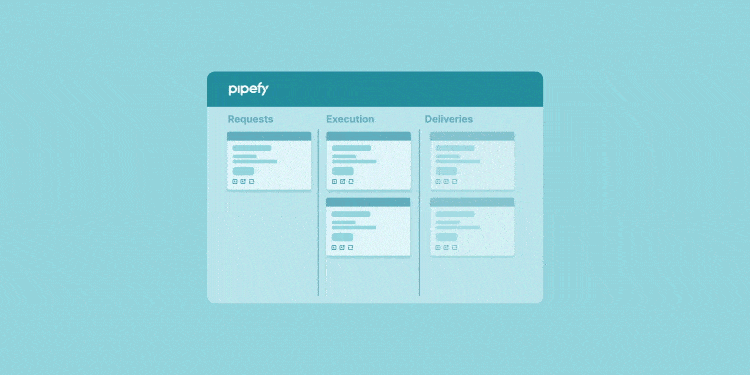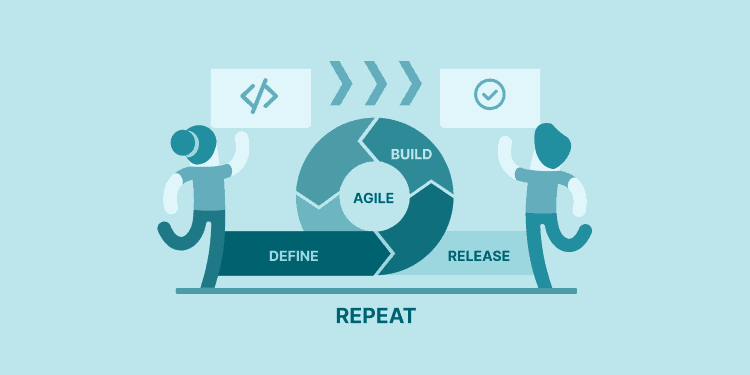ARTICLE SUMMARY
Many business and team settings can use Kanban. Nonetheless, this principle probably excels in the software development and IT fields. Kanban’s main advantages are: it helps to improve and manage the delivery of service in an evolutionary and continuously enhancing manner. Its three main guidelines are starting with what you have now, with your current process; agreeing to make changes and evolve your approach; respecting your team’s current responsibilities. In terms of software and IT, Kanban allows the team to deliver services and software more quickly and smoothly, optimizing the workflow and every level.

Many businesses and teams can use Kanban. Nonetheless, this approach probably excels in the software development and IT fields.
Kanban is a methodology that helps teams:
- track their work
- eliminate bottlenecks in the workflow
- (drastically) improve efficiency and quality
Kanban in Software Development (and IT)

Kanban’s main advantages are improving and managing service delivery in an evolutionary and continuously enhancing manner. Its three main guidelines are:
- starting with what you have at the moment, with your current process
- agreeing to make changes and evolving your approach
- respecting the team’s current responsibilities
In Kanban, management policies are explicit, and its visual representations allow us to understand a process faster and better. It often includes graphical models and scientific methods, which also improve collaboration.
In software development, Kanban works by prioritizing one specific task at a time: the one on top of the work log. It gives flexibility to other processes and ensures that all team members work on the most critical tasks. The results? Skyrocketing productivity and limiting the work in progress.
So, in terms of software and IT, Kanban allows development teams to deliver services and software more quickly and smoothly. Besides that, it optimizes the workflow at every level as it often leads to the discovery and implementation of new processes that focus on gradual organization and collaboration.
Kanban for Agile Teams
Even though it is a simple methodology, Kanban helps track and limit tasks in progress and works with Agile, Scrum, or any other approach that best suits you. That is why it’s a great way to improve how your team does things.

The methodology’s basis is Kanban Boards and Cards that represent tasks and a workflow overview. Kanban is as easy to use as a physical board with color-coded sticky notes. However, a more practical way to apply it is through software such as Pipefy.
Tracking your work in a Kanban board view will enable you to see:
- how tasks move across different phases of your processes
- where you can improve your workflows
- where tasks are dragging, resulting in bottlenecks
The work-in-progress (WIP) limit determined by the Kanban methodology is nothing more than setting rules for your team regarding how many tasks they can do simultaneously. Once you do that, you’ll limit the number of unfinished tasks to the amount previously agreed. Consequently, your team won’t start a new activity until they free space on the board (space becomes free as you completely move your tasks across it). So, it’s an excellent way to encourage team members to focus on WIP tasks and promote collaboration to get things done faster and better.
Why is Kanban useful for Agile teams?
Agile teams work in sprints (2-4 weeks) and deliver user stories—each one containing a feature related to the desired service/product. This way, their focus is getting a specific set of stories done until the sprint’s deadline.
Using Kanban, it is easier for developers and product leaders to track the work done on each sprint—as mentioned above, in a board view. In addition to it, Kanban boards can be your tool of choice actually to replace the sprint container.
Using the Agile approach means that, at the beginning of every sprint, the team will spend some time to plan and estimate the user stories and tasks for the entire sprint period. When you change the focus to workflows instead, they still can work with the sprint methodology. Yet, they can be faster, with no need to batch the planning and estimation of all sprint tasks: they can be individually done to each item once a card reaches the top priority on your backlog.
WIP limits will ensure people are only responsible for as many tasks as they can bear. Once there’s space available for a new one on the board, team members with the time and resources to work on it will be responsible for pulling the task to themselves and delivering them. Setting a limit for tasks in progress encourages members to become fully accountable for moving an item from planning to completion. Instead of focusing on getting a 2-week batch of work done, people will focus on finishing one thing at a time and follow the progress more efficiently.
On the other hand, it doesn’t mean that your team will stop using Agile or Scrum for Kanban. These methodologies are far more than just the sprint, and Kanban is a way to achieve process improvement, which means you should already have a process, to begin with, regardless of the methodology it follows.
How to improve your processes with Kanban and Pipefy

Pipefy’s Agile Software Development Template gives you alternatives to traditional project management. Agile approaches are typically used in software development to help businesses become more efficient. This process template helps your team become faster and more committed, adds a sense of accountability, and implements an execution culture crucial for every company.






